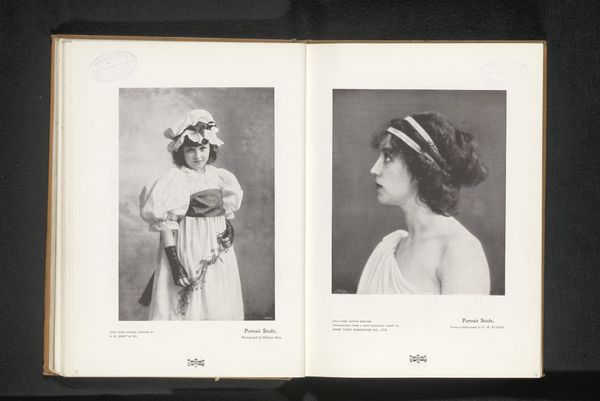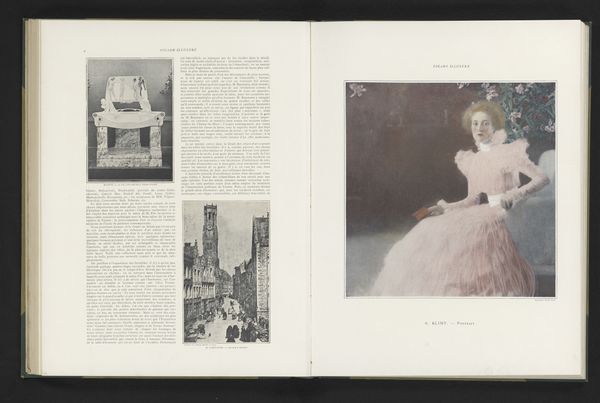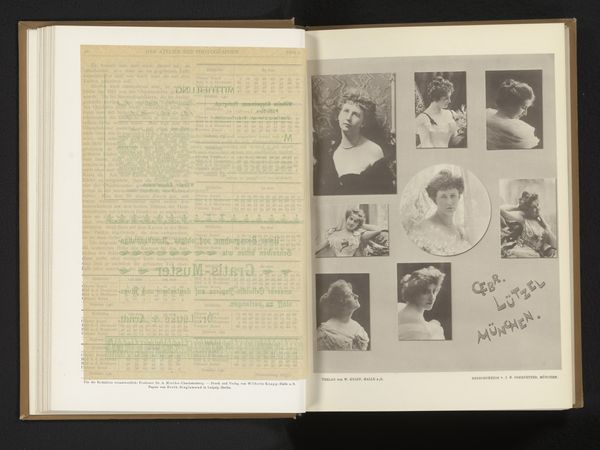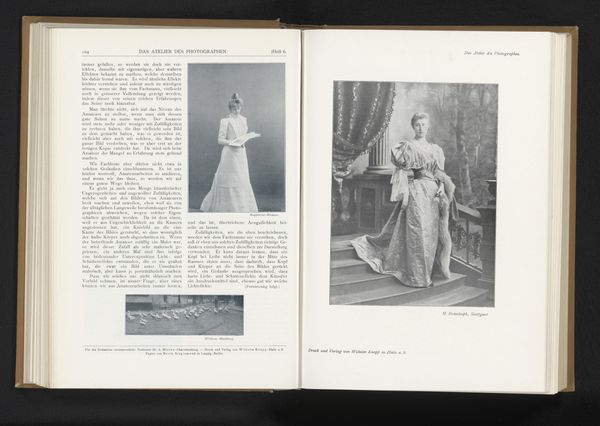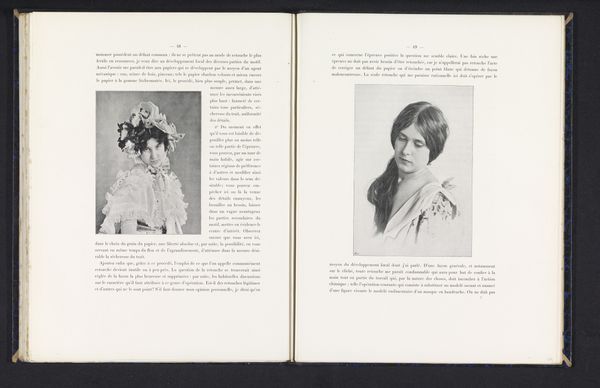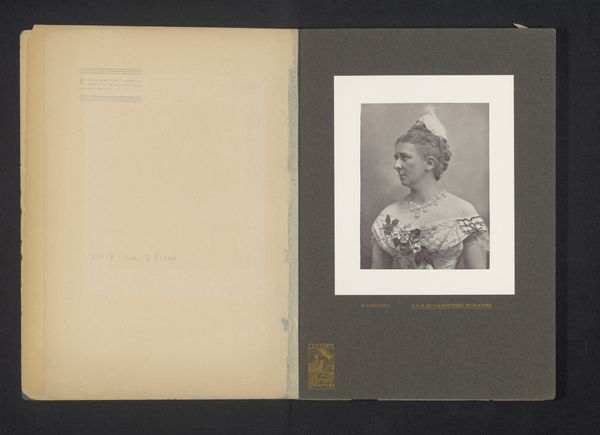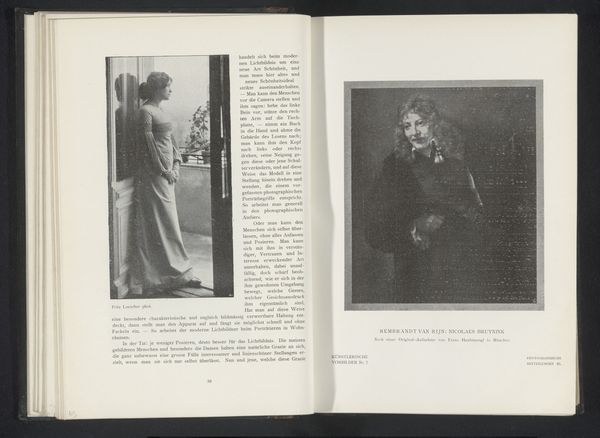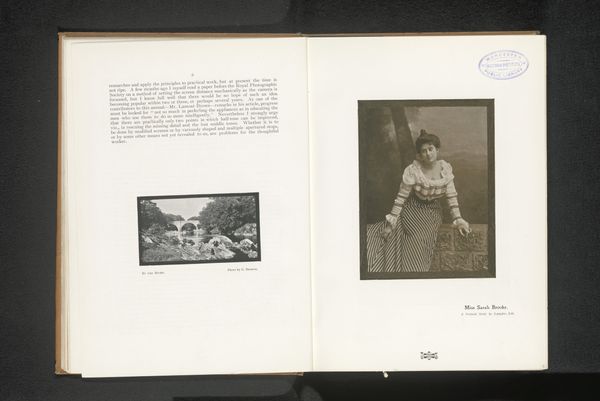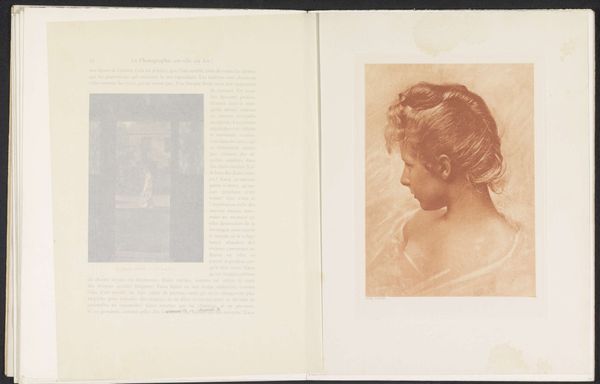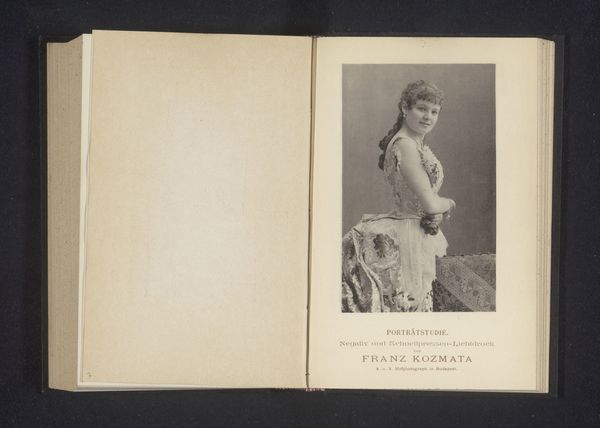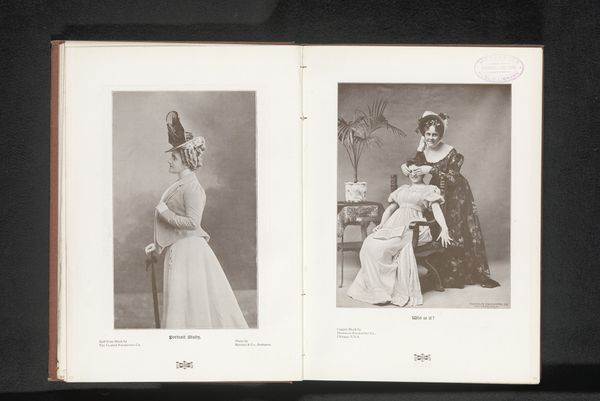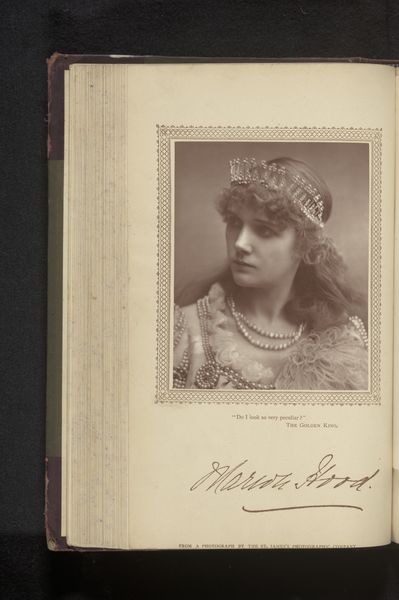
photography, gelatin-silver-print
#
portrait
#
photography
#
intimism
#
gelatin-silver-print
Dimensions: height 175 mm, width 117 mm
Copyright: Rijks Museum: Open Domain
Curator: Before us we have an intriguing gelatin-silver print titled "Portret van een onbekende vrouw", attributed to Gebr. Lützel and dating back to before 1899. Editor: My immediate impression is one of soft elegance. The tonal range achieved in this photographic portrait— the gentle gradients and delicate play of light—certainly lend the subject an aura of grace, if a bit formal. Curator: Indeed. Examining the materials and production offers context. The gelatin-silver process, refined during this period, allowed for mass production of photographs. This speaks to a broader culture where portraiture became accessible beyond the elite, marking a significant shift in photographic consumption. Editor: I find the composition, specifically the arrangement of her shoulders and neck, subtly guiding my gaze upwards. And I’m curious how the angle allows only a limited look at the soft adornment around her. I wonder about that purposeful limitation. Curator: Consider too, the studio portrait as a crafted image. The very act of sitting for a photograph was performative, a social ritual mediated by the photographer’s skill and the sitter's desired self-representation. Her elaborate dress suggests a certain social status, further emphasized by the deliberate choice of a photographic portrait. Editor: Formally speaking, the image relies heavily on chiaroscuro – the strong contrast between light and dark – not just for dramatic effect, but also to sculpt her face. Notice how the highlights on her cheekbone and brow bring those features forward. There’s intention behind where the light falls, directing the viewer’s gaze and perhaps even shaping our perception of her character. Curator: Precisely. Intimism as a theme suggests an exploration of personal and domestic spheres. This intimate portrayal could hint at the rise of a new middle class with disposable income. These people sought to record and celebrate their status. This contrasts sharply with the traditional uses of portraiture in aristocracy. Editor: It makes you ponder who she was. What was her position, her thoughts? Does she conform to conventional aesthetics, or is she, rather, a pioneer forging new pathways? And regardless, the execution is wonderful—its nuances have captured us both! Curator: I agree. Reflecting on the socioeconomic factors underpinning its creation, this piece underscores how photography became woven into the fabric of daily life, capturing the aspirations and shifting identities of the time. Editor: And beyond its sociohistorical implications, the enduring power of the image is this—it’s the compelling play of light, form, and texture that continues to captivate, giving insight into a bygone era.
Comments
No comments
Be the first to comment and join the conversation on the ultimate creative platform.
